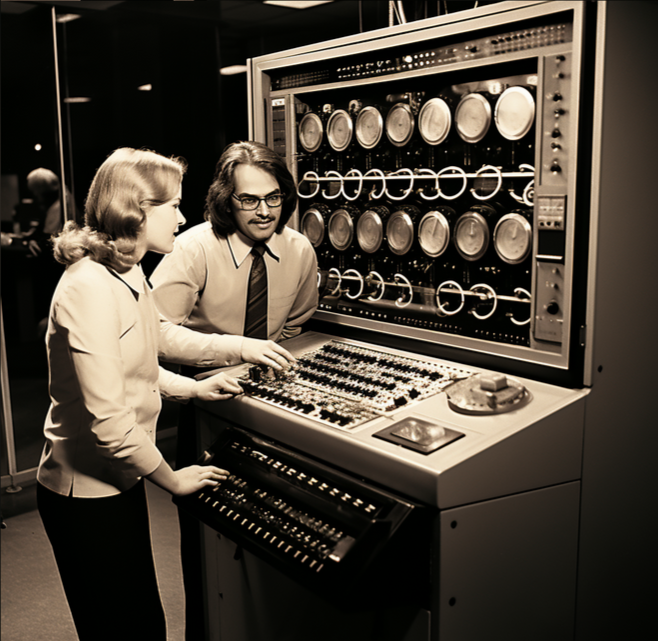
Back to the very early wargame and wargame-adjacent programs that are part of Ralph Hopkins’s stash. Last time, I gave some information about the MECC and covered the submarine games. For this article, I initially planned to cover all “air & land” games, leaving space games for a later article. It turns out there is only a limited number of playable games after all, so I merged what should have been two articles in what should be the last article on mainframe games for the time being.
WAR (1972)
This game was added on 20/10/2023 after I received a fixed version from one of the co-authors. I could not run the fixed version on my SOL-20 emulator so I ran it on the 8bitworkshop online emulator instead.
WAR simulates a nuclear war between the US and the USSR, and I believe it is the first “Nuclear Warfare” computer game in history.
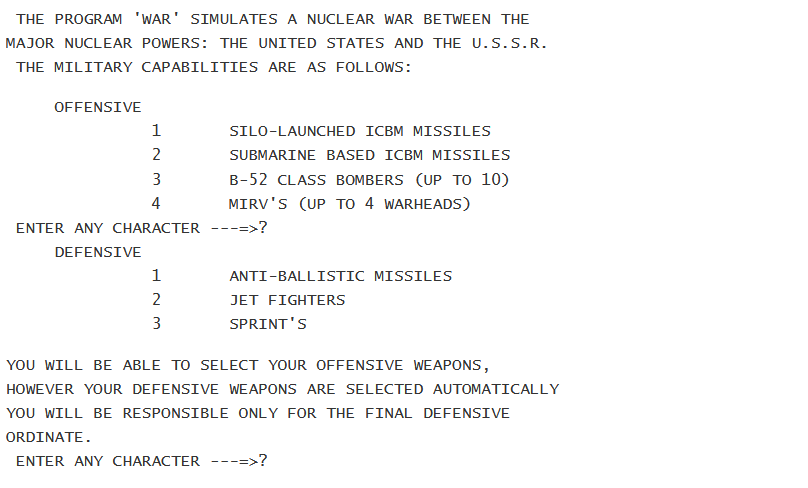
As expected, the objective is to eradicate the other side by destroying all their cities.
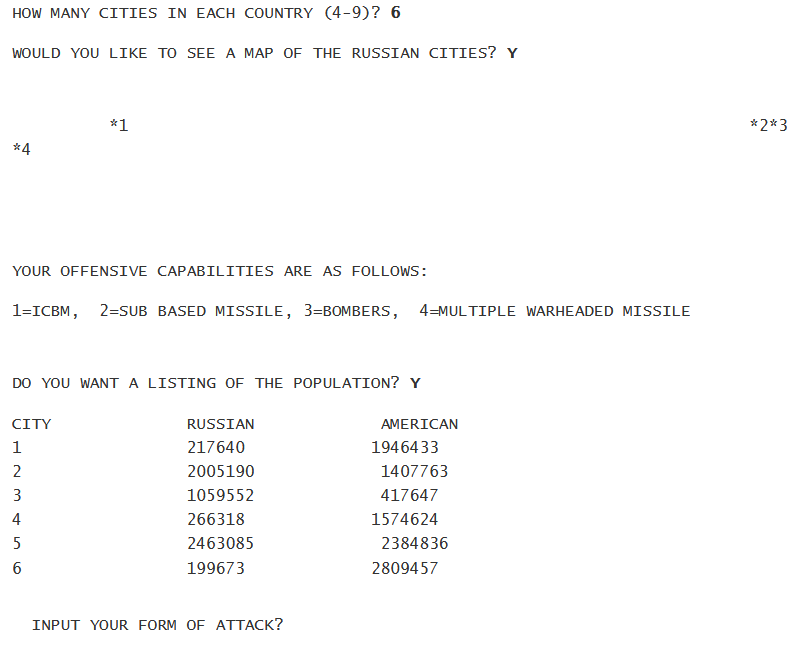
The player has 4 weapons at their disposal, but the ICBMs and the SLBMs have exactly the same effect : they kill a bunch of Russians in a city, often all of them.

The Russians send bombers, but I intercept some of them and my proud citizens tank the damage like the real heroes they are :
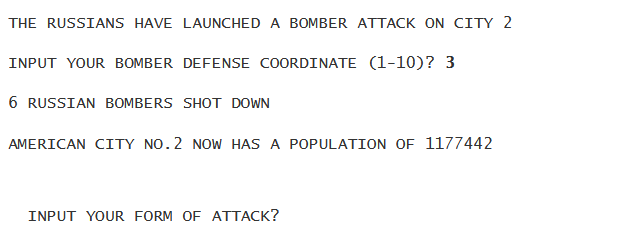
My weapon of choice quickly becomes the bomber, which in my experience never fails to overkill its targets :

When the Russians send missiles, there is a one-round number guessing game (aka : pure luck) to intercept the missile. I always fail, but once again I can count on my citizens to absorb gamma rays like champs !
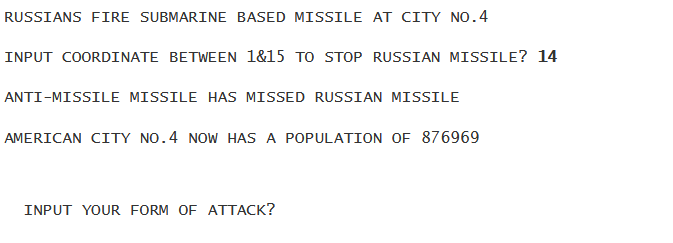
The MIRV is the last weapon in my arsenal. They send 1-4 warheads that can be spread across several cities, but I find them too weak to be worth the flexibility.
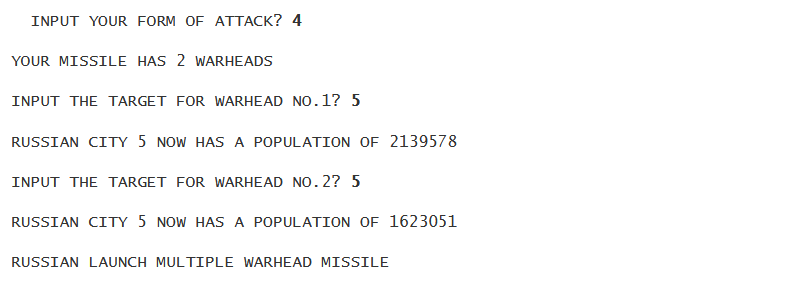
From time to time, the game asks you whether you want to see a population update. I am leading :
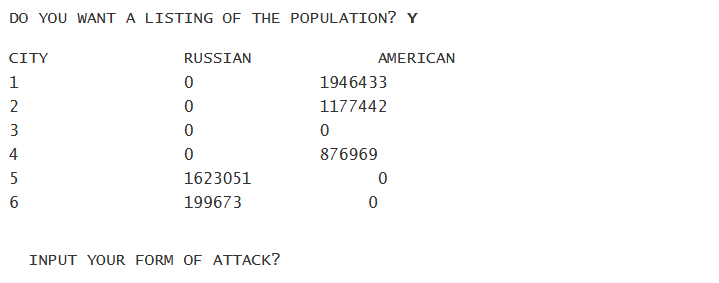
Eventually, the systematic usage of strategic bombers against an opponent who loses time using inferior weapons allows me to destroy all the Russian cities. Once again, the Stars and Stripes triumph !

According to comments in the code, WAR was coded by Peyton Carlson and Damian Bonicatto of Hibbing State Junior College in Minnesota. There is no date in the code, but I managed to contact Bonicatto who told me he coded WAR in either 1971 or more probably in 1972, consistent with his biographical details (he was born in 1952). This makes WAR one of the earliest proto-wargames in history : the 4th in my list after Civil War, High Noon and Mayfield’s Star Trek. The version available in Ralph Hopkins’ collection was broken but Bonicatto – who thought the code had been fully lost – kindly fixed his game so I could test it. He “tried to maintain the essence of the original poor programming (spaghetti code, poor variable names, no comments, etc)” and in doing so he sets a new record in the duration of game support: 51 years !
Bonicatto also told me that he coded WAR on an ASR-33 teletype. While essentially a luck-based game, he remembers it being popular for a few years, not only with the students but also with his physics professor, who was in charge of the terminal. The more the game was played, the more paper would be consumed, ensuring more funding for paper the following year. Ultimately, the middlemen were cut, and the game was adapted to play itself, presumably guaranteeing a steady budget for paper in subsequent years.
You can download the modified version here:
RADAR (1977)
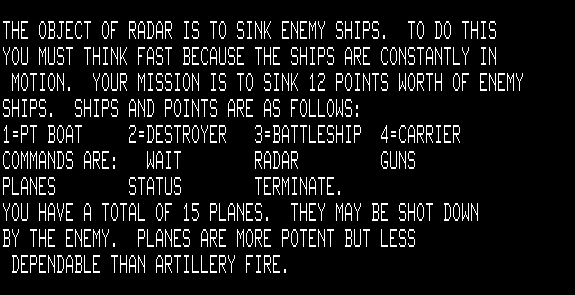
In RADAR, I must destroy enemy ships either with guns or with planes before they reach my radar.
The first thing to do is scan around to check what kind of opposition I face.

One carrier, one destroyer. Carriers are dangerous, not because they send planes but because they “kill” you if they are closer than 400 meters. For now, the carrier is almost 2 km away so I am safe from her, and she is safe from my guns :
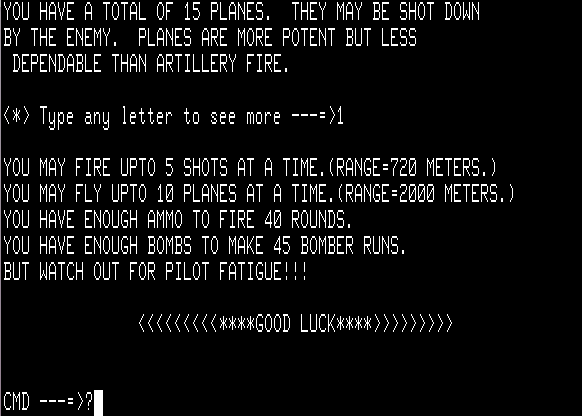
Planes it is then ! I send 10 of my planes, and badly damage the carrier, though she is still floating.
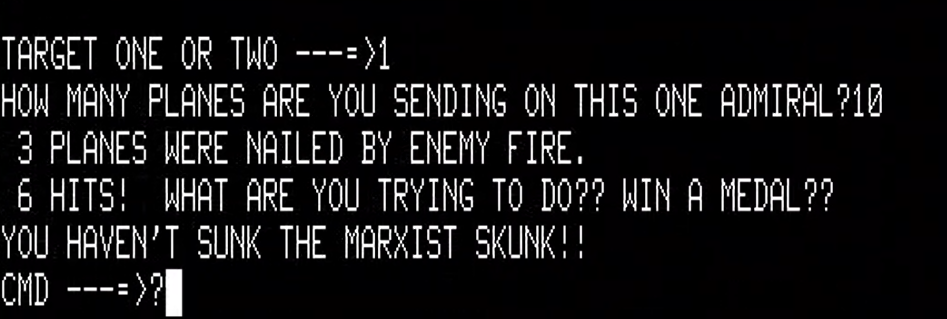
I can’t follow up with more bombers, because my pilots are “fatigued”. Instead, I wait for the ship to be in range and shoot. I miss the carrier, but she still sinks for some reason ^^.
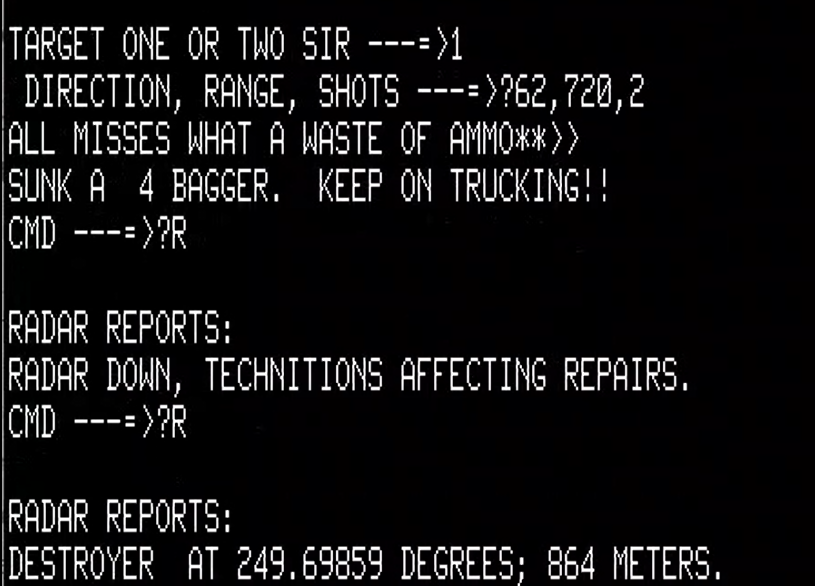
After that, I easily sink the destroyer. New ships immediately appear on my radar !
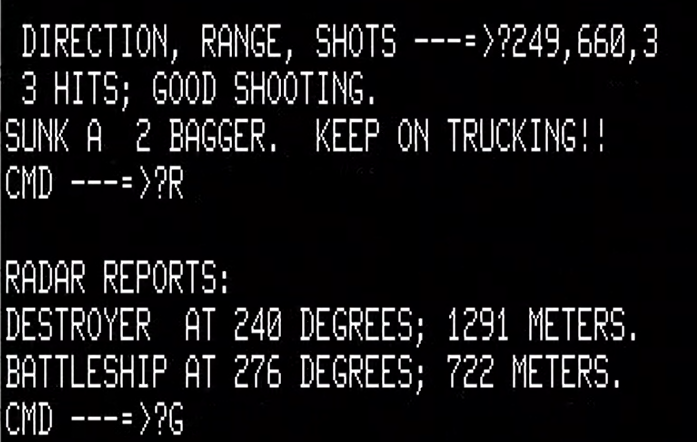
The battleship is another dangerous enemy, sturdy and able to kill me at a range of maybe 300 meters. My pilots are still fatigued, so I engage with guns…
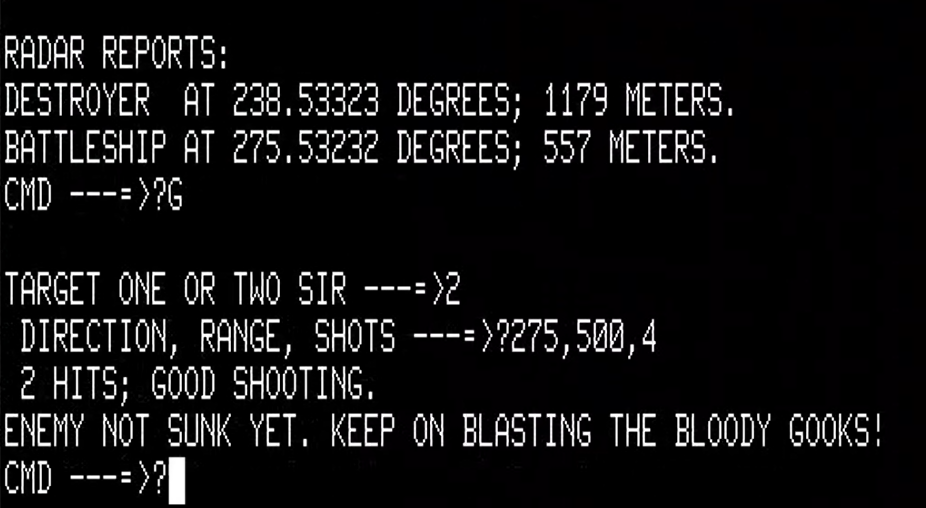
… but she survives. After that, my radar malfunctions, and when it is back online the battleship is almost on me. I immediately deploy my planes, and sink her !
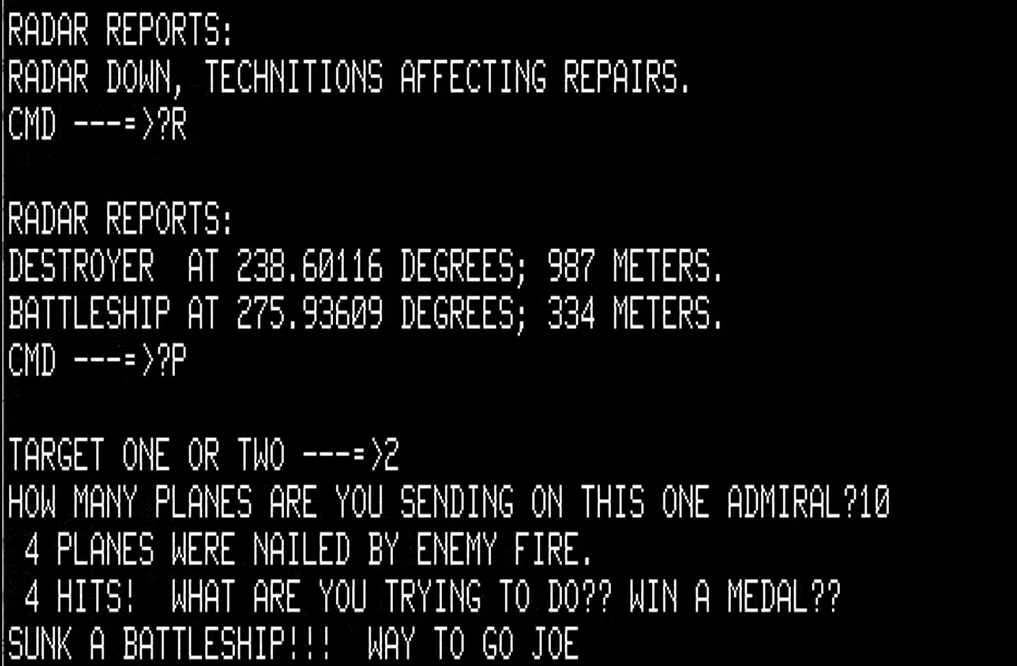
The destroyer is close enough to be killed easily by my gun. When I sink her, a final destroyer appears. She is also an easy target for my gun, and I win the game. Unfortunately, the game has a bug and the end text does not appear.
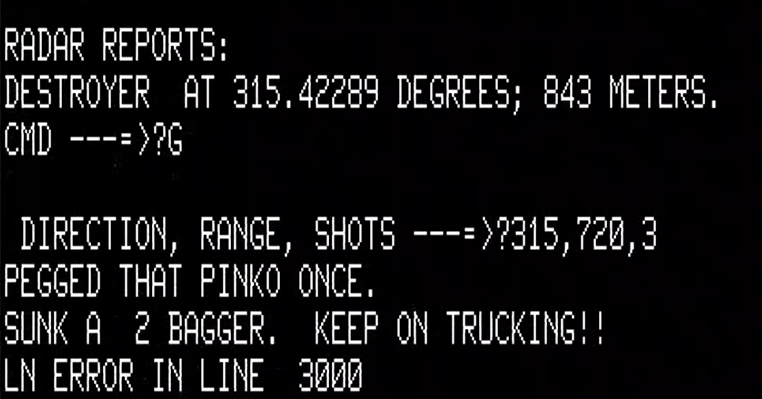
Here is what it should have read :

RADAR is attributed in the code to Walt Kailey with the note “MECC” and the February 1978 date, though one line below the code states “Revised 78/02/07. RHS 77/11/10“. I choose to believe that the first version comes from November 1977 from this mysterious RHS. The game comes from Ralph Hopkins’ stash, and there is no other version that I know of, so that’s a game that would have been entirely forgotten otherwise.
RADAR is not really a wargame (the only decision is whether to use planes or guns) and unfortunately, it is also full of bugs or questionable behaviours, like insulting the player and sometimes also ending the game in case of incorrect input.
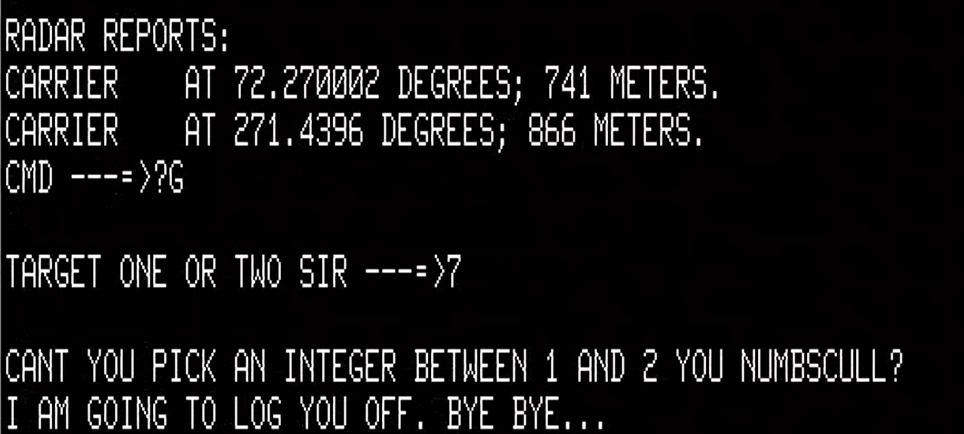
Worse, when the player loses, the game asks him whether “he is a pinko or a coward“. Answering “pinko” launches a “PRINT” loop, which must have been oh-so-very popular in the teletype era :
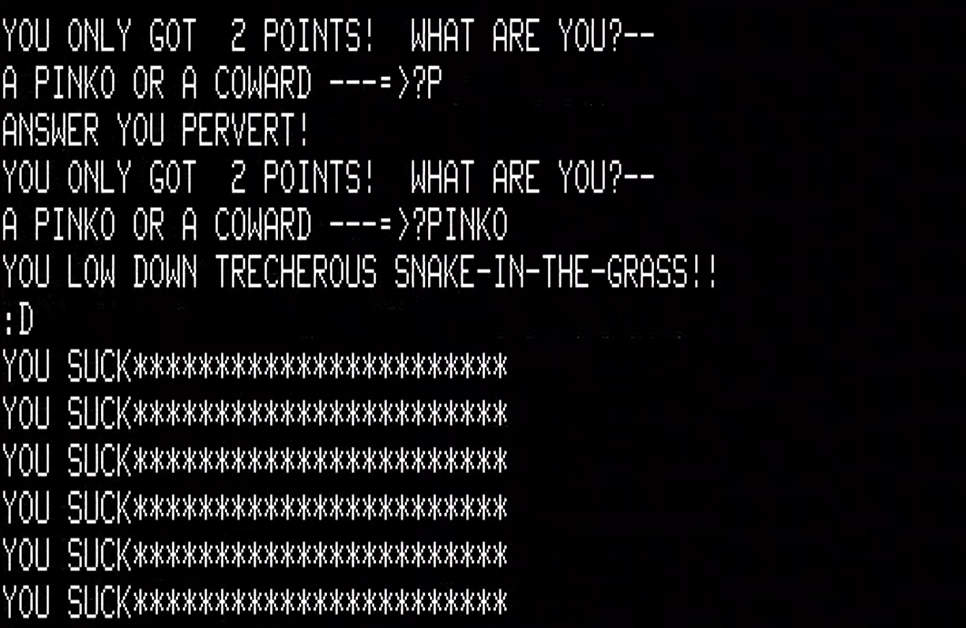
Most of the coders of those games were students or even high-schoolers, so jokes are common in mainframe projects. Still, RADAR takes the crown for obnoxiousness.
ZorphWar (1977)
ZorphWar is the brainchild of William Seurer from Benilde-St. Margaret High School in Minnesota and is based on a short story published earlier in 1977. It belongs to the tactical Star Trek (Trek73) family, except now you are a space station, and you are surrounded :
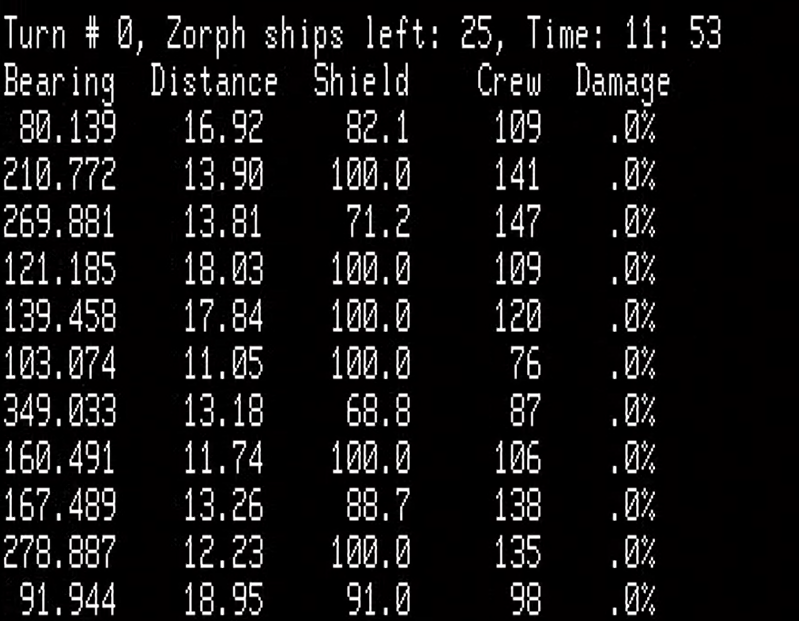
There are so many Star Trek variants that I don’t play those that don’t bring something radically new to the table. I am not sure whether this one qualifies – the instructions are lost and all my attempts to defend myself ended in catastrophic failure before the enemy even activated its laser.
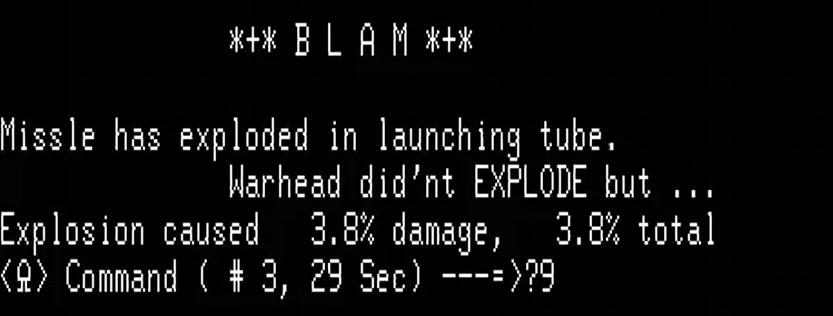

The game features 8 different weapons (nuclear missiles, chemical missiles, anti-matter missiles, neutron missiles, laser, blaster, disruptor and disintegrator), each of them with several tubes facing different directions, forcing the player to rotate their space station – not really playable without instructions, even if I wanted.
WWIII (1978?)
WWIII is about fighting several rounds against Soviet Union with each side having a random number of men engaged each time.
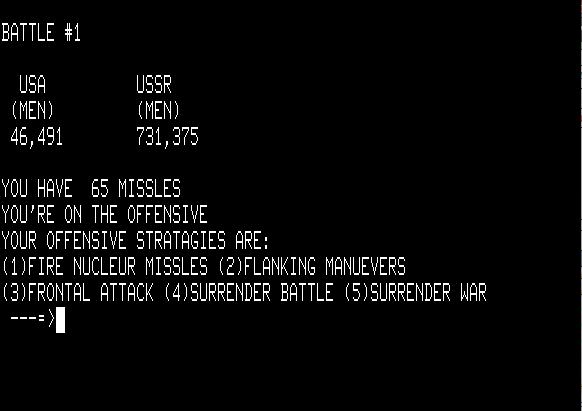
Alas, it is also incomplete. Using the unlimited stock of nukes or sending everyone in a flanking attack works every time, and actually kills more Soviet soldiers than started the battle.
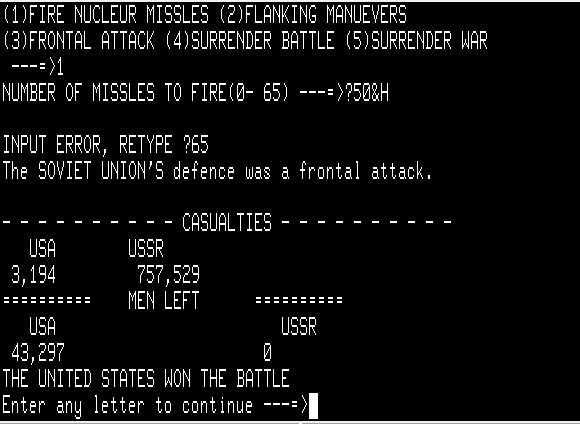
The author of WWIII is unknown. Ralph Hopkins is our only source for this game. He states he copied it in 1978 and then revised it in 1981, but it still feels like a work-in-progress. A reminder that not all those mainframe games were any fun.
That’s all. I have discarded several games, either because they don’t fit the purpose of the blog (and would make horrible AARs anyway) or because Ralph Hopkins was in a frenzy of copying everything he found, including incomplete and buggy games that turned out unplayable. Those games include :
- MSSLE (1981?), a weird 1D game where you need to shoot another plane with a missile. It plays more like a board game. Uniquely, it is commented as being “property of the University of Houston”.
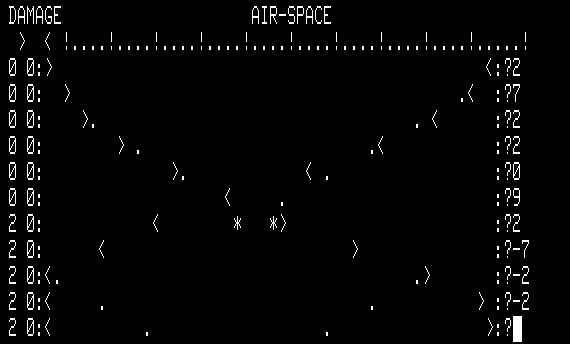
The planes are “>” and “<“, “.” is a missile and stars are explosions
- More than 10 Star Trek clones, including a tactical Trek by Colonel W. F. Luebbert from West Point. It is tagged as “revised in May 1973”. It is presumably even older than Trek73, and totally different in terms of “structure” to both Trek73 and the Daglow/Peterson Star Trek. This one deserves a full article I believe, but I am a bit burned out on Star Trek at the moment, so maybe later.
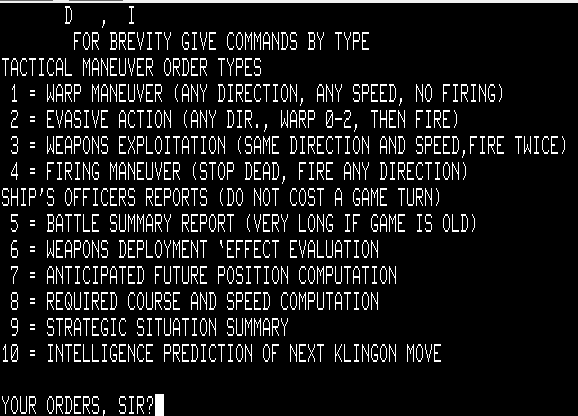
- Finally, STRWAR (1977) is absolutely not a wargame, but prompted me to ask myself “What was the first Star Wars game, official or not ?” One thing leading to another, I created a forum post to discuss this question, and the thread includes a short AAR of STRWAR.
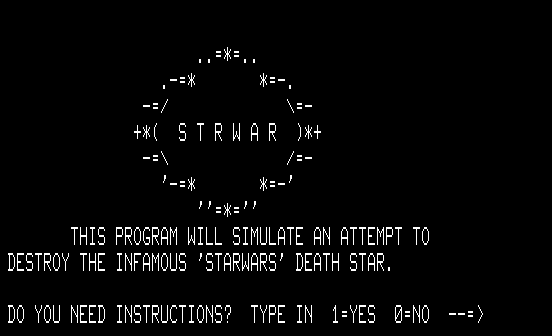
That’s it for the mainframe games for the moment. I feel I can move to the SOL-20 precursors, which is actually just a list of programs all done by Ralph Hopkins. Fortunately, he was a competent designer, as I will show in an upcoming article.